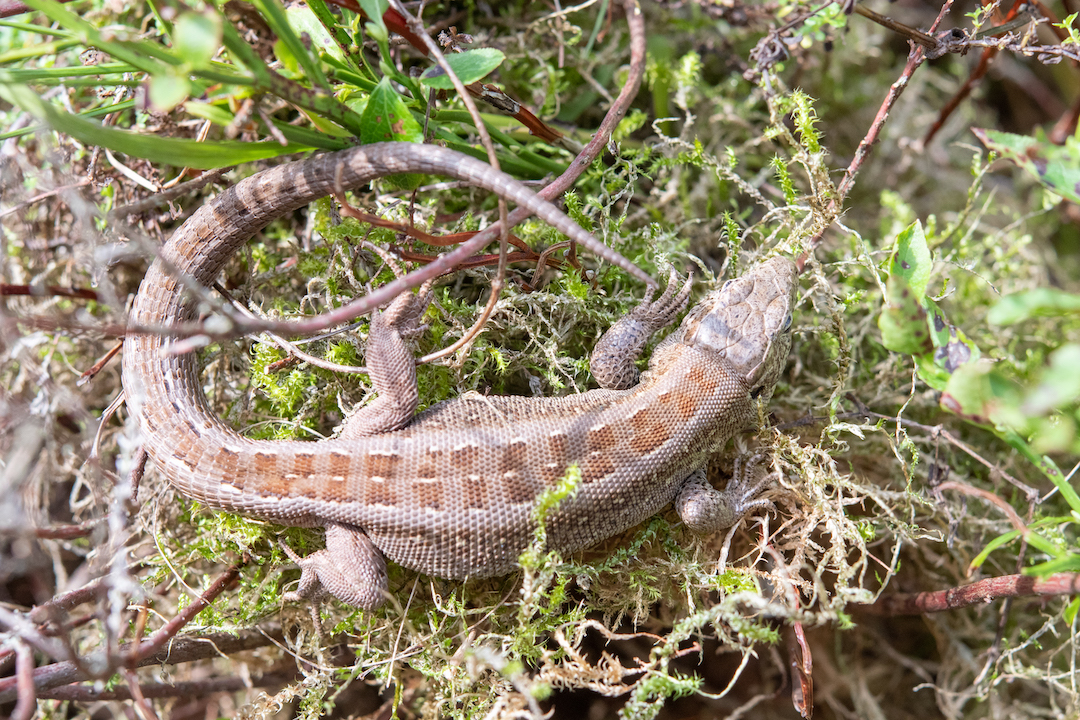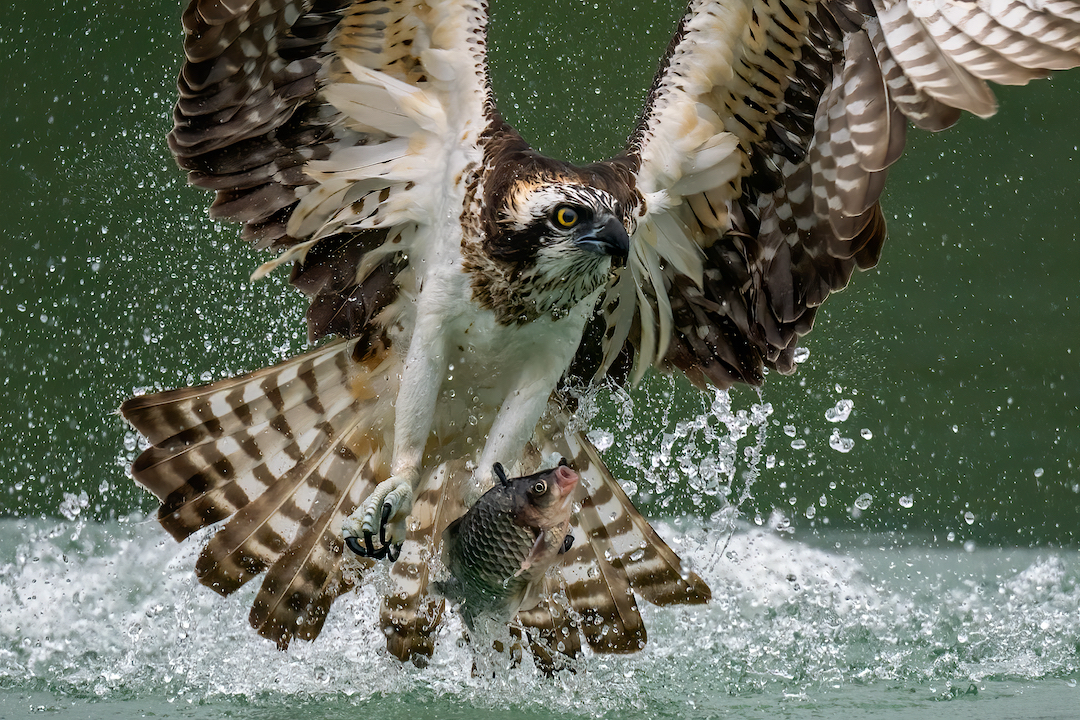Discover the core of Celtic Rewilding’s mission—species recovery and reintroduction. From reptiles, amphibians, mammals, birds and even plants, join us in restoring ecosystems, through the careful re-establishment of threatened and extinct wildlife. We’ve also collated some fun facts and fascinating insights you might not know!
Species Key
Ⓝ – Native to and extant in Britain, Ⓔ – Extinct and native to Britain or being reintroduced
🟡 – Threatened, 🔴 – Critically endangered
Uncover the world of resilient reptiles—masters of adaptation. From the agile Sand Lizard to the majestic Aesculapian Snake, each creature contributes to ecological balance. Explore their diverse habitats and vital roles in nature.

Green colouration with a distinct double lateral stripe in some individuals. Native to parts of south and western Europe. Eats insects, small vertebrates and occasionally fruit. Often found in sunny, open habitats.

Unique among lizards for giving birth to live young.
Found in a variety of habitats, including moorlands and woodlands.
Feeds on insects and spiders. Becomin increasingly uncommon in the UK.

Males often have a striking emerald colouration during the breeding season.
Native to sandy heathlands and coastal dunes in northern Europe.
Males develop striking green colouration during the breeding season.
Rarest lizard in the UK.

Distinguished by its striking eye markings. Native to the Iberian Peninsula. Prefers rocky, forested habitats. Threatened, at one point, by hunting for their meat.

Legless lizard, not a snake.
Bronze or brown colouration with a shiny appearance.
Often found in gardens, forests, and grasslands.
Feeds on slugs, insects, and small invertebrates.

The only UK native species of freshwater turtle.
Extinct thanks to human hunting, drainage and climate deterioration.
Potential as a freshwater 'cleaner' by consuming carrion, reducing the nutrient loading of waterbodies.

Adaptable species found in various European environments.
Introduced to Britain.
Diet includes small invertebrates.
Frequently seen on walls, rocks, and trees.

Nonvenomous snake species.
Typically greenish-brown with a slender body.
Prefers wooded habitats.
Feeds on rodents, birds, and small mammals. The largest snake in Northern Europe.

Britain's rarest snake. Feeds on chiefly reptiles, but also voles. A very secretive partially burrowing species. Found in dry habitats, such as heathland.

Infamous zigzag pattern, varied colours.
Found in heathlands, moors, and woodlands.
Carnivorous, feeding on small mammals and birds.
Extinction in Britain likely within the next decade.

Green colouration with a distinct lateral stripe.
Native most of Europe.
Eats frogs, toads, newts and fish.
Often found in sunny, open habitats which feature water.
Feeds on amphibians, fish, and small mammals.
Meet our captivating amphibians, bridging land and water. From the European tree frog to the agile frog, they enrich aquatic and terrestrial ecosystems, often by providing a vital prey-base. Explore their fascinating life cycles and essential roles in maintaining healthy wetland habitats.

Small, scrub-dwelling frog.
Likely collected to extinction for 'medicinal' purposes in Britain sometime in the 16th Century.
Distinctive call resembling a series of loud 'qwacks'.

Also known as the Green Toad. Typically, green with darker spots or stripes. Prefers meadows, wetlands, and open forests. Diet includes insects and small invertebrates.

Britain's rarest frog.
Reintroduced in 2005
Often found in marshes, ponds, and slow-flowing waters, on the continent.
Diet includes insects, small invertebrates.

The UK's rarest toad.
Typically found in damp heathlands and dunes.
The loudest amphibian in the UK, with males calling in late spring onwards.
Feeds on insects and small invertebrates.

Males turn a striking azure blue in spring.
Native to often peaty bogs of north and Eastern Europe.
Eats insects and small invertebrates.
Extinct in Britain due to human induced pH changes in lowland bogs.

Smooth skin, varied colouration.
Diverse habitats, from ponds to gardens.
Carnivorous, preying on insects and small invertebrates.

Warty skin and varying shades of brown or green. Commonly found in a variety of habitats, from gardens to woodlands. Secretes toxins as a defense mechanism. Declined by 68% since 1970.

Sleek, slender body; distinct colour variations.
Can jump over 2m.
In the UK, it is only found on Jersey, although fossils show it lived on the mainland around the 9th Century.

Prefer grassy habitats, they construct nests from woven grass. Active mostly at night, these mice forage for seeds and insects. Harvest mice are skilled climbers, navigating plants and stems with ease.

Beavers change landscapes like no other, second only to elephants and humans. Their dams and canals improve landscapes, helping resist droughts and floods. A budget-friendly choice for preventing floods. Reintroductions taken place since 2001.

Preferring freshwater habitats such as rivers, streams, and marshes, water voles are excellent swimmers and divers. Despite their small size, water voles play a crucial role in ecosystem health by shaping wetland habitats and providing food for predators like otters and birds of prey. Declined by 98% in recent years.
Soar on a winged adventure! We have experience introducing and conserving key bird species that contribute to our restoration projects. Here are a few we have worked with.

Reintroduced to England in the 1990s. A large raptor known for its spectacular fishing skills. Unique in its ability to dive into water to catch fish with its talons. Found near freshwater habitats, lakes, and coastal areas.

A spectacular bird, with a 7ft wingspan Last nested in the 14th Century Reintroduction pioneered by Knepp and Derek Gow. We have a small colony at the breeding facility.

Small finch species virtually extinct in England.
Prefers open habitats such as moorlands, heaths, and coastal areas.
Reintroduction being spearheaded by our fellow collaborator, OC Aviary.
Blossom with our plant reintroductions, where we engage in the restoration of various flora, cultivating biodiversity. Among our cherished reintroductions are the elegant Black Poplar, the resilient Greater Tussock Sedge, and the exquisite Lady”s Slipper Orchid. These plant varieties stand as a testament to our commitment to ecological balance and the flourishing of diverse ecosystems.

One of the rarest crickets in Britain. Reduced down to just one tiny population. Unique burrowing habit. Males call loudly, during spring and summer days warmer than 13 degrees.

The largest snail to be found in Britain. Threatened by habitat loss, and historically collection as this species is readily eaten. Debate as to whether the species is native or introduced to Britain.

Not only endangered in Britain, but also globally. Threats include pollution and wetland drainage, but most notably introduced invasive crayfish species and their diseases.
Blossom with our plant reintroductions, where we engage in the restoration of various flora, cultivating biodiversity. Among our cherished reintroductions are the elegant Black Poplar, the resilient Greater Tussock Sedge, and the exquisite Lady”s Slipper Orchid. These plant varieties stand as a testament to our commitment to ecological balance and the flourishing of diverse ecosystems.

An iconic tree species with distinctive blackish bark, contributing to riparian habitats and providing essential ecological benefits.

A resilient plant known for its tussock-forming habit, playing a crucial role in wetland ecosystems and providing habitat for various species.

An exquisite orchid species with unique slipper-shaped blooms, often considered a symbol of rare beauty and conservation efforts in wildflower meadows.
Please contact us by using the form below:
© 2024 Celtic Rewilding
Company Number #12881565
Website designed, developed and hosted by Swift